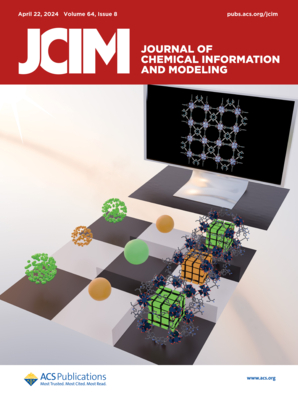用COBY创建粗粒度系统:迈向复杂生物系统的更高精度。
IF 5.3
2区 化学
Q1 CHEMISTRY, MEDICINAL
引用次数: 0
摘要
当前分子建模的趋势是朝着在更大、更复杂的系统中反映生物环境的日益现实的表示方向发展。系统构建过程的复杂性最好由将用户提供的描述符转换为系统坐标的软件来处理。然而,这不是一项微不足道的任务,因为构建算法使用的简化会导致系统属性的不准确性。我们创建了COBY,这是一个粗粒度的系统构建器,可以在单个命令调用中创建各种各样的系统,并提高了复杂膜和溶剂构建过程的准确性。COBY还包含在一个步骤中构建不同系统的特性,并具有帮助力场开发的功能。COBY是一个用Python 3编写的开源软件,其代码、文档和教程托管于https://github.com/MikkelDA/COBY。本文章由计算机程序翻译,如有差异,请以英文原文为准。
Creating Coarse-Grained Systems with COBY: Toward Higher Accuracy of Complex Biological Systems.
Current trends in molecular modeling are geared toward increasingly realistic representations of the biological environments reflected in larger, more complex systems. The complexity of the system-building procedure is ideally handled by software that converts user-provided descriptors into system coordinates. This, however, is not a trivial task, as building algorithms use simplifications that result in inaccuracies in the system properties. We created COBY, a coarse-grained system builder that can create a large variety of systems in a single command call with an improved accuracy of the complex membrane and solvent building procedures. COBY also contains features for building diverse systems in a single step, and has functionalities aiding force field development. COBY is an open-source software written in Python 3, and the code, documentation, and tutorials are hosted at https://github.com/MikkelDA/COBY.
求助全文
通过发布文献求助,成功后即可免费获取论文全文。
去求助
来源期刊
CiteScore
9.80
自引率
10.70%
发文量
529
审稿时长
1.4 months
期刊介绍:
The Journal of Chemical Information and Modeling publishes papers reporting new methodology and/or important applications in the fields of chemical informatics and molecular modeling. Specific topics include the representation and computer-based searching of chemical databases, molecular modeling, computer-aided molecular design of new materials, catalysts, or ligands, development of new computational methods or efficient algorithms for chemical software, and biopharmaceutical chemistry including analyses of biological activity and other issues related to drug discovery.
Astute chemists, computer scientists, and information specialists look to this monthly’s insightful research studies, programming innovations, and software reviews to keep current with advances in this integral, multidisciplinary field.
As a subscriber you’ll stay abreast of database search systems, use of graph theory in chemical problems, substructure search systems, pattern recognition and clustering, analysis of chemical and physical data, molecular modeling, graphics and natural language interfaces, bibliometric and citation analysis, and synthesis design and reactions databases.

 求助内容:
求助内容: 应助结果提醒方式:
应助结果提醒方式:


